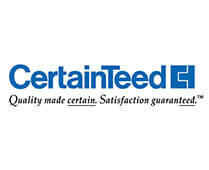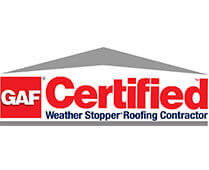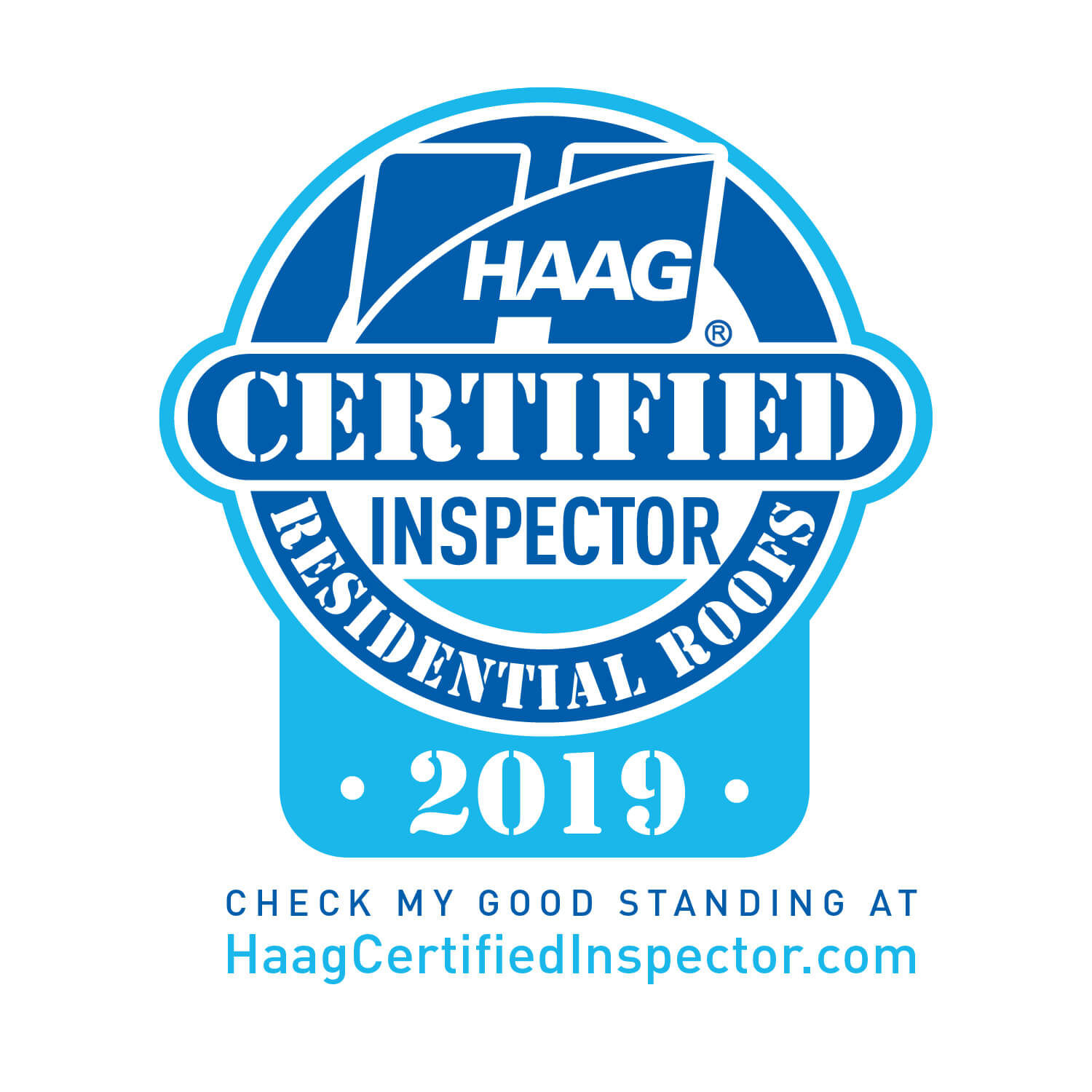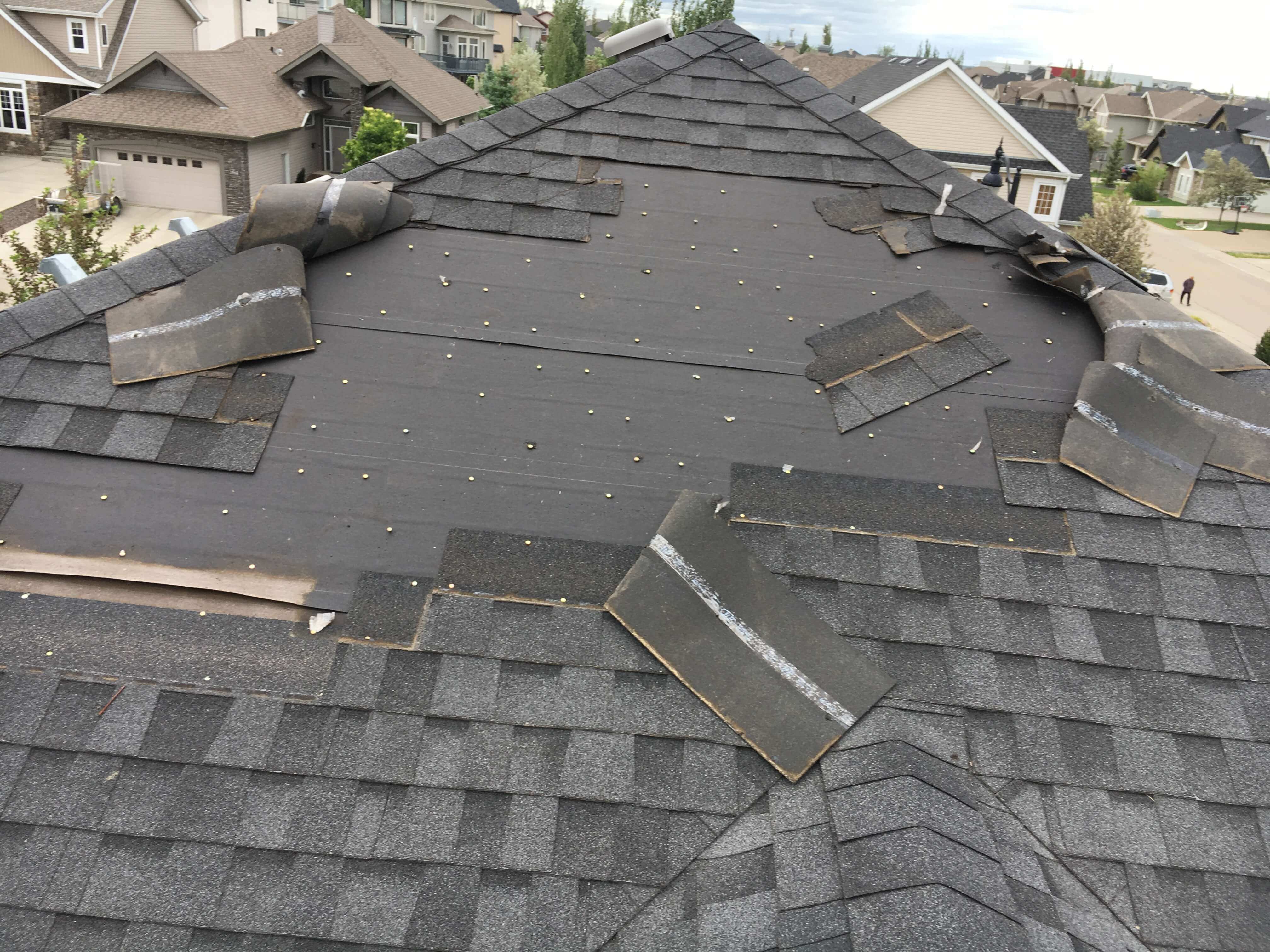
April 04, 2025
Roof replacement in Edmonton means stripping off the old material. Afterwards, trained workers lay new shingles or other materials that work best with the kind of climate that area has. In Edmonton, with our infamous winters and extreme temperature changes, roofs can take a beating.
Many residents find themselves in the situation where their roofing must endure the decay caused by snow, ice, and wind. Popular choices include asphalt shingles and metal, both designed to withstand the frigid temperatures. Homeowners and property managers around the city are looking for smart roofers.
They need specialists who are intimately familiar with local codes and who can expertly execute with the right materials. As you can see, costs can vary widely depending on roof size, pitch, and material selected. Here’s what you should expect when taking on a roof replacement project in Edmonton.
It addresses the expected expenses and what you need to know first.
Key Takeaways
-
Edmonton's harsh winters, frequent hailstorms, and strong prairie winds demand regular roof inspections and timely maintenance to ensure your roof’s longevity and performance.
-
Choosing roofing materials specifically suited for Edmonton’s climate, such as durable asphalt shingles or metal roofing, helps protect against local weather challenges.
-
Watch for major indicators like curling shingles, granule loss, sagging, and interior water stains. These are the signs that let you know it’s time to repair or replace your roof.
-
Having an understanding of the age and condition of your roof is important for an effective replacement. Moreover, understand your local building codes and permit requirements in Edmonton.
-
Schedule any roof work in the summer or fall to minimize the weather-related delays and allow for the best installation quality.
-
Proper attic ventilation Invest in improved drainage systems Use ice dam prevention techniques to ensure your new roof delivers optimal value and performance in Edmonton’s extreme climate.
Why Roof Health Matters in Edmonton
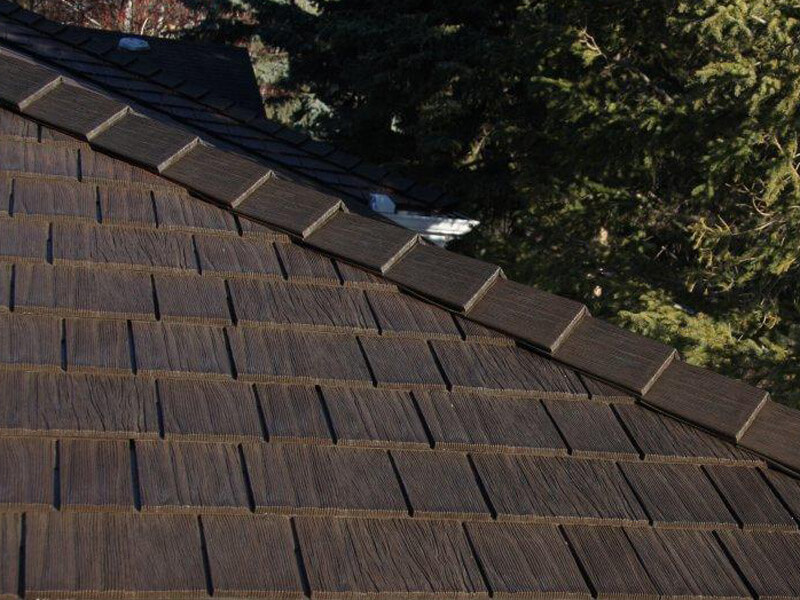
Edmonton’s extreme weather takes a toll on our roofs. The city endures as many as six months of winter, severe snowstorms, large diurnal temperature changes, and blustery prairie winds. These conditions test the mettle of all roofs.
Homeowners are at a higher risk of incurring leaks, energy loss, or expensive repair costs. With our unique climate, a healthy roof here isn’t just a luxury—it’s an essential part of protecting your home from the elements and maintaining its integrity and investment.
Battling Harsh Winter Snow Load
Edmonton snow piles up quickly. Roofs are required to withstand heavy loads while still remaining aesthetically pleasing. When accumulated snow is allowed to remain on the roof, it will start to add extreme weight to your structure and eventually can lead to an unfortunate collapse.
Homeowners use snow rakes to clear roofs safely, focusing on spots near edges and overhangs. Roof design plays an important role, as well—a steeper slope sheds snow quicker and prevents the accumulation of weight on the structure.
Surviving Hail Alley Storms
Second, hail damage occurs to Edmonton homes almost every year. Roofs bear the impact of these storms, usually resulting in damaged or missing shingles. Inspect your roof post-hailstorm to identify issues before they become leaks.
Inspections provide a valuable opportunity to detect damage early. Installing impact-resistant shingles or metal panels provides additional protection. Prompt attention prevents minor hail impacts from developing into more significant problems with the next rain.
Understanding Freeze-Thaw Damage
As temperatures fluctuate between above and below freezing, water seeps into tiny fissures and expands when frozen, causing these fissures to spread. This continual freeze-thaw cycle, unfortunately quite normal here in Edmonton, can crack shingles or cause flashing to come loose.
Identifying early signs of damage each spring and repairing them prevents larger problems down the road. Prevention through regular inspections is the most effective approach.
Resisting Strong Prairie Winds
Wind gusts in Edmonton can tear off shingles, or even bend up entire sheets of a roof. Thicker materials such as architectural shingles hold on tighter.
Focusing on nailing down any detached components and conducting post-storm inspections help minimize wind damage. Tightly fasten edges and corners, the areas where wind impacts the most.
Spotting Roof Replacement Red Flags
Knowing when your roof needs more than just a patch job is key in Edmonton, where winters put extra stress on homes. Taking action early prevents more extensive repairs and saves money in the long run. Identifying red flags early on can provide homeowners an opportunity to take action before the damage has already progressed.
1. Shingles Curling, Cracking, Missing
When you notice shingles that are curling, cracked, or even missing altogether, the roof is aging and needs replacement. These warping spots allow rain and wind to creep in. During Edmonton’s freeze-thaw cycle, brittle shingles deteriorate quickly.
Any missing shingles will leave the underlayment exposed, which can eventually cause leaks.
2. Finding Granules in Eavestroughs
Granules shield your shingles from UV rays. Finding granules in your eavestroughs is a sign that your shingles are nearing the end of their lifespan.
If you notice many more granules than usual, it may indicate that the roof is failing. You can gauge the degree of shingle deterioration by keeping a record of what you discover.
3. Noticing a Sagging Roof Deck
If your roof deck is sagging, there’s likely significant structural damage underneath it, typically caused by years of water exposure or rot. That’s not an easy repair.
Whatever the case may be, it’s crucial to have a roofing pro on your side as soon as possible.
4. Seeing Interior Water Stains
Interior water stains on ceilings or walls indicate that there is a leak directly above. Identifying the source and repairing it promptly prevents further damage from occurring and safeguards your home’s structure.
5. Dealing with Persistent Leaks
Persistent leaks are a sign of a major underlying issue. Temporary patch-ups just aren’t going to do it.
That’s why a complete inspection by a trusted roofing professional is critical.
6. Spotting Moss or Dark Streaks
Moss and dark streaks indicate that moisture is lingering, which can damage the shingles. Removing moss and ensuring roof drainage prevents further damage from occurring.
7. Checking Flashing Around Vents
Flashing gaps or cracks around pipes, furnace, etc., will most assuredly be a source of leakage. Ensure all flashing is appropriately sealed, and replace quickly if noticed damaged.
8. Knowing Your Roof’s Actual Age
The average lifespan of a roof in Edmonton is 20-25 years. If you know the exact age of the roof, you can create a replacement plan before major issues occur.
Hidden Issues Demanding Attention
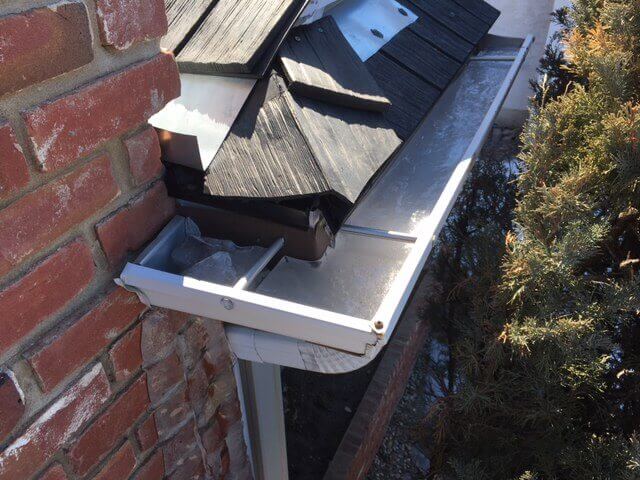
Like a lot of Edmonton homes, these roofs have hidden issues that remain concealed until they lead to greater disaster. With local winters and summer heat swings that can make your roof work double time, these hidden issues can become a reality. Frequent inspections can identify minor leaks, shingle loss, or areas where heating is escaping.
Addressing these issues early prevents costly repairs and extends the overall lifespan of roofs.
Higher Energy Bills Hint Problems
A sudden increase in monthly energy bills indicates an issue with the roof. Wet, damaged or settled insulation causes heat to escape in winter and enter in summer. Now the furnace or AC has to run double time, jacking up costs.
Often, roof leaks allow moisture to enter insulation, ruining it and increasing energy bills. If you see an upward trend with your heating or cooling expenses, do something about it now!
Now it’s time to take a hard look at our roof. Improvements such as roof replacements with new shingles and installing more effective attic insulation contribute to lessening the volatility of energy usage.
Attic Clues: Daylight and Dampness
The attic is usually the first place to notice concealed roof impairment. If daylight is shining through the rafters, there’s a hole in the roof. Damp areas, mold, or that classic old house smell indicate a lack of air circulation or hidden water damage.
Any moisture that’s trapped behind walls or in attics can cause rotting wood and even weaken structural beams. Yet even a minor water stain can signal weeks of progressive, unseen deterioration.
Preventing these issues with regular inspections prevents them from getting worse and saves money over time.
Poor Insulation Under the Roof
Many older Edmonton homes are poorly insulated. Poor insulation equals more heat escaping and less comfort inside during colder months. There could be gaps the size of your finger in even new homes where air can seep out.
An energy audit performed by a qualified professional will identify the areas that most need upgrading. Improved insulation almost completely stops heat loss.
It reduces your energy bills and makes a room warm in the winter and cool in the summer.
Repair Patch or Full Replacement?
It can be tough to determine if you should do a patch job or replace your roof completely. Edmonton’s cold winters and hot summers further complicate the decision. Primary consideration should be given to the extent and width of the damage.
Instead, you can usually repair small leaks or several missing shingles for a fraction of the price. What’s more, these repairs typically take less than a single day to complete! If the roof has bigger issues like sagging, widespread moss, or leaks in many places, a patch job may only buy time.
When Minor Fixes Aren't Enough
Repair patching can be an effective short-term solution for small-scale issues, such as one or two leaks or a few cracked shingles. If the same spots keep leaking, or if water stains keep showing up inside, patching might not solve the root problem.
Old layers, wet insulation or hidden rot usually hide underneath the surface. If your roof is more than 50 years old—even with good care—replacing it is safer and prevents bigger headaches later. Patchwork is effective for low-hanging fruit. It can’t fix structural fatigue or decades of exposure degradation.
Factoring in Roof Age vs. Cost
For example, an asphalt shingle roof generally lasts around 20 years, while a metal or synthetic slate roof can last as long as 50. Natural slate roofs last more than a century. If your roof is approaching the end of its expected lifespan, investing in repairs might not be worth it.
If the roof is relatively new, a repair may be a better option to increase the value and extend the time until a replacement is needed.
Choosing Long-Term Value
When it’s time to replace, prioritize materials that can withstand Edmonton’s harsh climate. Metal roofs and synthetic slates are widely considered an appropriate choice for longer-lasting materials.
High quality materials typically include longer warranties and require lower maintenance over time. Long term while the upfront costs are higher, overspending today could lead to no repairs being needed and a good roof for many years to come.
Best Roofing Materials for Edmonton
Selecting the best roofing material in Edmonton involves balancing extreme weather conditions with value over time and budget. Edmonton’s climate is characterized by long, harsh seasons from bitter cold to short, hot summers, including heavy snow loads, hail, and intense winds.
The right materials withstand these extremes while ensuring homes remain safe, dry, and energy-efficient.
Asphalt Shingles: A Common Sight
Edmonton is known for its many asphalt shingles roofs. They’re the default choice for homeowners looking for a low-maintenance roof that won’t break the bank. Asphalt shingles typically last between 20–30 years, depending on the quality and maintenance.
Fortunately, most brands offer a wide range of colors and even textures. This wide range of options means that it’s easy to find an appearance to match any architectural style. Thanks to their ease of installation and repair, they help keep labor costs low.
For the average family, asphalt shingles offer the best value for their money in terms of cost and performance.
Metal Roofing: Built to Last
Metal roofs are starting to take hold in Edmonton. They can deal with extreme weather, quickly shed heavy snow, and last 40–70 years. Energy efficiency is another major benefit—metal reflects sunlight, reducing cooling costs by up to 50%.
Metal roofing is available in a variety of attractive styles, from panels to shingles, with finishes that imitate slate or wood. While initial investments may be more expensive, you’ll save on maintenance with a longer lifespan overall greatly balancing costs over time.
Lifespan in Our Climate
Our local weather is harsh and hard on roofs. Rubber roofing, which is manufactured from recycled tires, can last more than half a century, providing excellent protection against hail and temperature fluctuations.
Slate roofs, while uncommon and expensive, can reach a life expectancy of 100 years with routine maintenance. Traditional wood shingles and shakes are beautiful, but require regular treatments to resist moisture and pests.
Clay and concrete tiles require regular cleaning to prevent mold, which can be a challenge in Alberta’s climate.
Matching Materials to Your Budget
Begin with getting prices of materials—shingles, metal, rubber, slate. Asphalt will still be the cheapest, but metal and slate roofing materials will have higher up-front costs but will last much longer.
Home improvement loans can assist in covering the higher up-front costs of premium materials.
Navigating Edmonton Roof Replacement
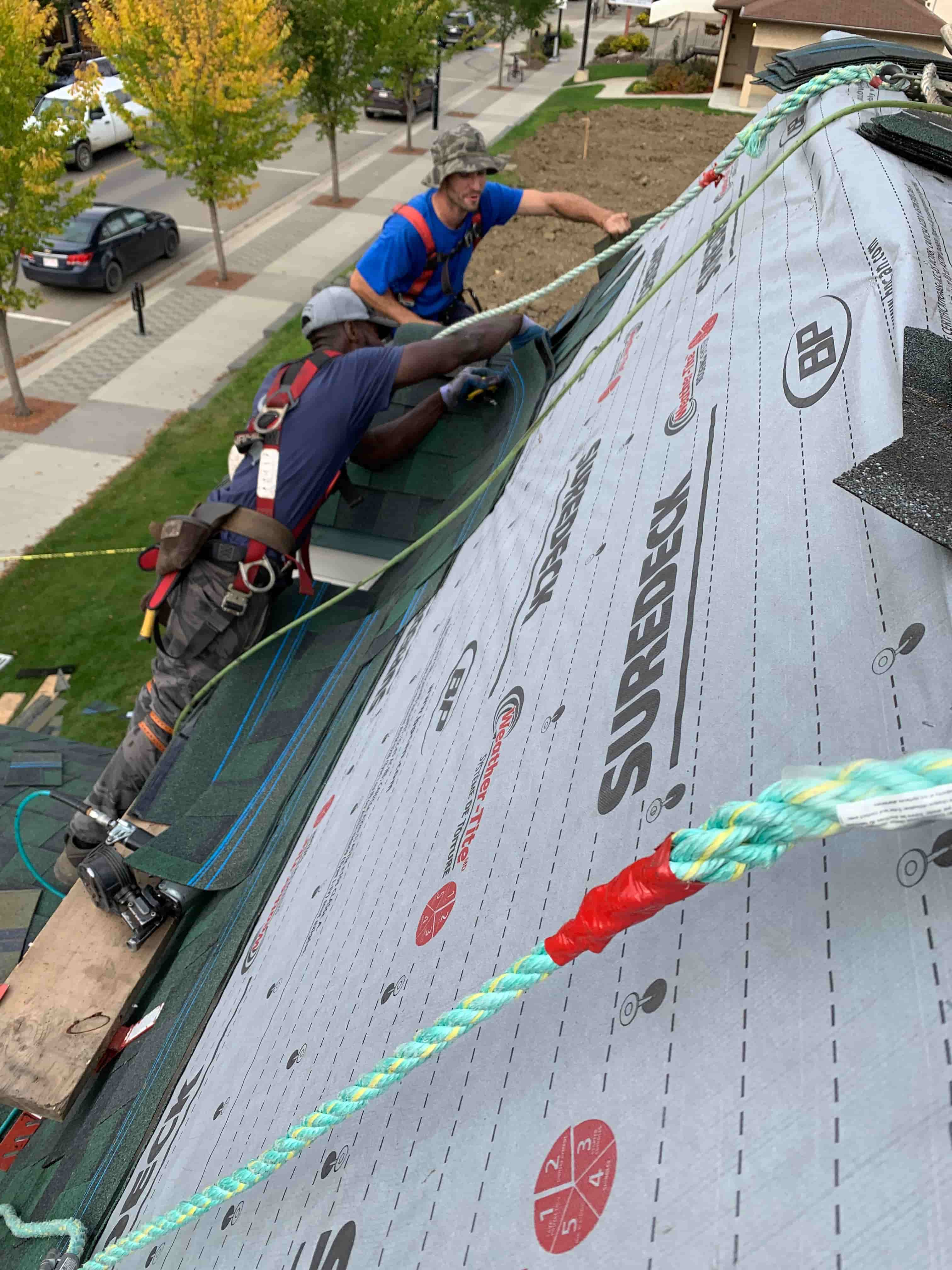
Roof replacement in Edmonton isn’t a black box. Local weather, city regulations, and the building market shape this route. Up here, roofs around Edmonton can be battered by the harsh, biting cold, heavy snow accumulation, and sudden summer thunderstorms.
Homeowners intuitively schedule replacements for the late spring to mid-summer months when the weather is most predictable and work is completed most efficiently. Choosing the right time ensures no unnecessary delays and keeps homes safe from potential leaks or water damage while work is underway.
Local Permits and Building Codes
Replacing your roof in Edmonton involves navigating local permits and building codes. The City of Edmonton requires permits for nearly all roof replacements, even if you only replace existing shingles.
These regulations are especially rigorous to ensure that roofs can support snow loads and provide for fire safety. If codes are not adhered to, homeowners can face fines or even be forced to redo the work.
Local roofers can often help you navigate these waters. It’s always a good idea to verify with city websites or speak with an inspector to make sure you’re on the right path.
What Influences Replacement Costs Here
A few factors determine how much you’ll spend. Material is a big one: asphalt shingles cost less, while metal or rubber cost more up front but last longer in harsh weather.
While labor rates in Edmonton may be consistent, costs go up with larger roofs due to the bill size. Permit and inspection fees can contribute to the bottom line.
In addition, aging homes often require additional installation-related repairs after the existing roof is removed.
Choosing Reputable Edmonton Roofers
Take the first step by soliciting estimates from reputable contractors. Search for roofers who have great customer ratings, familiarity with Edmonton-style homes, and current professional licensure.
Inquire how much experience they have performing jobs like yours and ask for references. Top Edmonton roof replacement contractors will walk you through options, explain a timeline and won’t get defensive over a question.
Understanding Warranty Protection
Almost all roofing materials are backed by warranties. 20-year, 30-year, even 50-year options abound. Warranties are different, so it’s important to pay attention to the details.
Store all documents in one place for later claims or resale.
Ideal Timing for Edmonton Roofing
Determining ideal timing for Edmonton roofing involves considering weather, daylight hours and availability of pros. In this city, weather can change quickly. Here’s why timing is of the essence for roof work. Almost all roofing jobs happen during the spring, summer and fall months. These seasons provide the best and safest working conditions.
Unless there is a major leak, winter should be limited to emergency patch jobs.
Why Summer and Fall Work Best
Summer and autumn provide many weeks of warm, dry weather in a row. Summer is best for small fixes or upkeep, since the heat helps shingles seal and crews can work longer hours. With no last-minute scramble, it’s much simpler to schedule the best-rated roofer in town.
Summer is the ideal time for most roofing work. It’s always a good idea to prepare your roof for cold and snow, sealing up vulnerable areas before the winter weather arrives. Additionally, contractors enjoy the benefit of longer days, which allow crews to move quicker and keep your project on schedule.
Since most Edmonton roofers have openings in these months, you’ll be able to more easily schedule the job around your needs.
Challenges of Off-Season Work
Edmonton is extremely busy in the spring, as the arrival of mild weather reduces the risk of damage and the number of roofers available increases. Reliable rain or late-spring snow can still create challenges.
Winter poses significant dangers—ice, snow, and extreme temperatures derail work and damage new shingles. Wintertime jobs can be more expensive too, as crews operate in challenging environments and require specialized equipment.
Work performed in wet or freezing conditions may not hold up as well. First, always plan in advance and ensure that the roof is completely dry before commencing work.
Boost Your New Roof's Performance
As any roofing professional in Edmonton will tell you, a new roof is about more than appearances. It protects your home from penetrating winters, excessive rains, and damaging winds. If you want to maximize the performance of your new roof, a few wise strategies will help you achieve the greatest return on investment.
Proper installation, necessary upgrades and regular maintenance are key. Doing each one will save you money on repair bills, and it will increase the lifespan of your new roof. Investing in appropriate roofing materials for Edmonton’s climate, such as metal or concrete tile, will reduce wear on the roof and increase its lifespan.
Importance of Proper Attic Ventilation
Proper attic ventilation is essential to a healthy, long-lasting roof. First, good air circulation in the attic prevents moisture from accumulating and maintains more consistent temperatures. If this isn’t addressed, you will likely experience mold, warped wood, or uneven shingle wear.
In a place like Edmonton, where extreme temperature swings are the norm, the impact of hot and cold air can exacerbate issues. Installing ridge vents or soffit vents allows air to flow freely and is an effective solution on almost any type of roof. This can help save on heating and cooling bills since your HVAC system won’t need to work overtime.
Upgrading Eavestroughs and Drainage
Upgrading eavestroughs and drainage is crucial. Sloppy gutters and drainage can seriously damage your home by rerouting rainwater. Another consideration is that old or clogged gutters can lead to water pooling, which may eventually leak into walls or basements.
Installing seamless gutters or larger downspouts generally drains water more quickly and efficiently, especially in larger storm events common in Edmonton. Additionally, maintain your eavestroughs by making sure to clean your gutters at least twice annually. Taking the time for due diligence inspection for damage can stop much bigger problems from occurring later.
Strategies for Preventing Ice Dams
Ice dams can be an acute issue during Edmonton winters. Good insulation and attic airflow can stop heat from melting snow on your roof, which refreezes and forms ice dams. Monitoring for inconsistent roof surface temperatures and having professionals do an inspection of your new roof after a heavy snow can help identify problems early on.
Proper insulation and air sealing are the best defense against ice dams. This helps your new roof perform at its best.
Conclusion
Roof replacement on homes in Edmonton extends beyond simply replacing shingles. Climate impacts taking a toll. Wild wind, extreme winters, and intense rain are all making their presence felt. Ignore the warning signs, and leaks or mold can quickly become a major issue. Choose durable materials, such as asphalt or metal. Our local crews are the first to admit what works and what doesn’t in this area. Schedule the installation for late spring or early fall and avoid the ice and rain. Keep gutters clean, remove snow build-up, and check for loose nails. These actions ensure a seamless transition and save money in the long run. People who do their homework on roof maintenance avoid costly expenses down the road. Any questions or looking for some straight talk about your specific project or needs? Contact a local, independent roofer today. Stay dry, stay safe, and keep your home looking great. Edmonton roofs deserve that special touch.
Frequently Asked Questions
How often should I replace my roof in Edmonton?
The average lifespan for roofs in Edmonton is 20–25 years. Harsh winters and damaging summer storms can reduce that lifespan significantly. Stay vigilant and inspect your roof periodically to identify problems before they escalate.
What are the best roofing materials for Edmonton’s climate?
Asphalt shingles, metal roofing, and rubber roofing are all great options for Edmonton. These materials do great during heavy snow and ice seasons, as well as fluctuating temperatures.
How can I tell if my roof needs full replacement or just repairs?
Signs of a need for a roof replacement Look for extensive curling, missing shingles, visible leaks and mold. If that damage extends to more than 30% of the roof, full replacement is probably the most appropriate option.
When is the best time to replace a roof in Edmonton?
Late spring to early fall is perfect. Warm weather and dry conditions are ideal for proper installation and curing.
Are there hidden roof issues specific to Edmonton homes?
Are ice damming, attic condensation, and wind damage prevalent roof issues for Edmonton homes. Routine checkups can identify these issues before they escalate.
How do I choose a reliable roofing contractor in Edmonton?
Make sure they have all appropriate licensing, insurance and check for local references. Reading reviews and obtaining several quotes can help you weigh the contractor’s expertise against their pricing.
Can a new roof improve my home’s energy efficiency?
You bet it would be. Modern roofing materials and proper insulation help keep your home warmer in winter and cooler in summer, saving on energy bills.
Not what you were looking for? Safe Roofing also offers the following services:
Safe Roofing’s Certifications and Qualifications
Manufacturer Certification: IKO (preferred installer)


